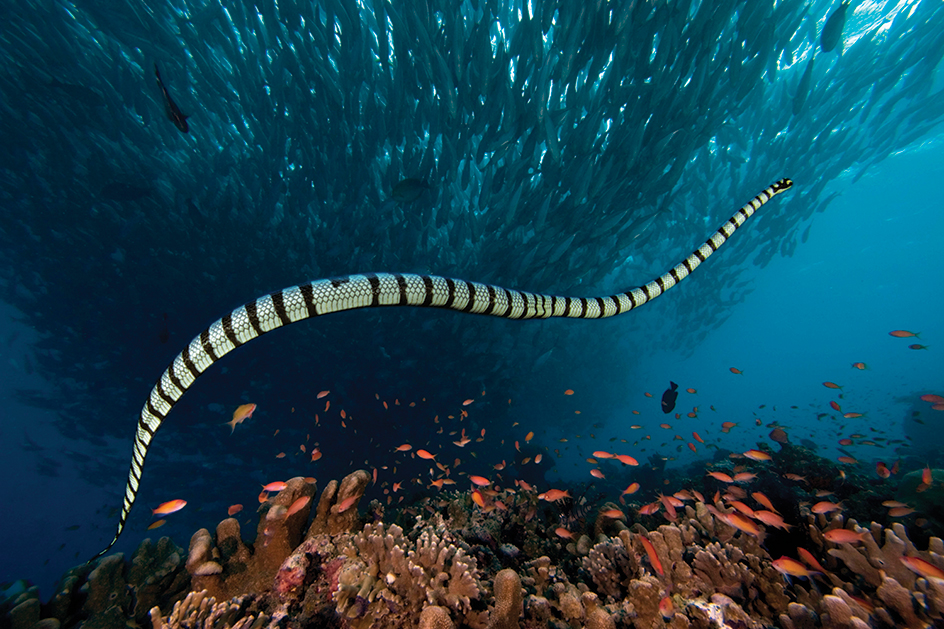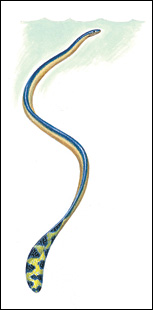Sea snake is a snake that spends most or all of its life in the water—usually in the ocean. Dozens of species (kinds) of snake are called sea snake. They vary greatly in color, appearance, and behavior. Sea snakes live in the Indian and the Pacific oceans, often near coastlines.

Some species of sea snake eat a variety of foods, such as crabs, fish, and shrimp. Other species eat only certain kinds of fish or fish eggs. Nearly all sea snakes inject an extremely powerful venom (poison) with their needlelike fangs. But most sea snakes are not aggressive.
The scales on a sea snake’s back may be smooth, ridged, beaded, or even spiny. Most sea snakes lack the enlarged belly scales that help other snakes slide along the ground. A sea snake propels itself through the water by waving its body and paddlelike tail from side to side.
A sea snake’s nostrils have valves that can close to seal out water. Most sea snakes have nostrils on top of the snout, enabling the animal to breathe from the water’s surface. The right lung of a sea snake can stretch the entire length of its body, helping it to float. Sea snakes can hold their breath for hours and dive more than 300 feet (90 meters) in depth. A special gland under the tongue rids the snake’s body of excess salt taken in from the water. Most species of sea snake give birth in the water to live young.

An unusual type of sea snake called sea kraits spend much time on land. Their tails are not as paddlelike, and their nostrils are not on top of their snouts. Sea kraits lay eggs on land.
The yellow sea snake ranks as the largest sea snake. It can grow up to about 9 feet (3 meters) in length. A few sea snakes, such as the Crocker’s sea snake, live only in freshwater lakes isolated from the sea.
